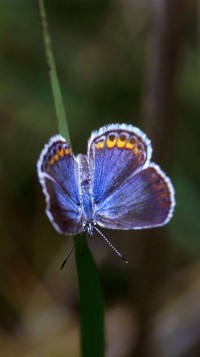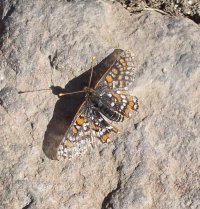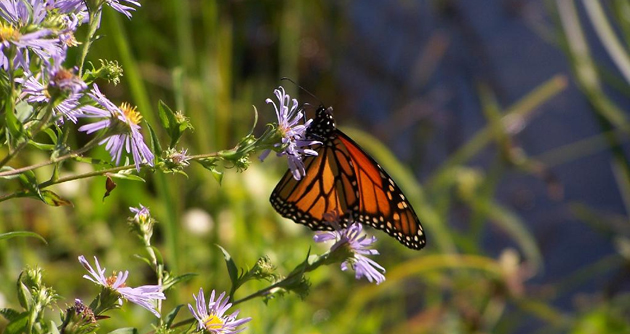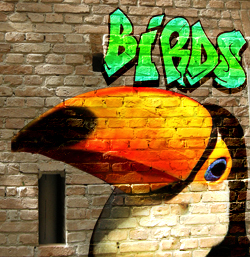Butterflies are more than just beautiful insects. Their role in ecosystems is also very important, as they pollinate many different kinds of plants and serve as an important indicator of environmental health. Unfortunately, in the wake of widespread habitat loss around the world, many butterfly populations are in decline.
“Butterflies are sensitive indicators. They decline when habitats are destroyed and when man harms the environment. We have known about butterfly losses in Britain for over 50 years. Now there is mounting evidence that it is a global problem,” Sir David Attenborough, President of Butterfly Conservation, said last year (according to Butterfly Conservation). “If butterflies are disappearing, other wildlife will be declining too. Some will be facing extinction.”

The Karner Blue Butterfly is listed as “Endangered”. They can now only be found in Indiana, Michigan, Minnesota, New Hampshire, New York and Wisconsin. (Image by USFWS)
Choosing the right site for your garden:
- Select an area in your yard that gets at least five hours (and more is even better) of full sunlight each day. Remember that this will mean the plants you choose to grow must be able to thrive in direct sunlight.
- Establish your garden near a tree line, structure, or hedge to provide shelter for the butterflies at night and to protect them from winds.
Important things to have in your butterfly garden:
- A few large stones or rocks scattered throughout the garden in areas where they can absorb lots of heat from the sunlight. This gives butterflies a warm place to rest, so they can conserve energy.
- Butterflies prefer to drink from little pools of water in sandy areas or in soil (like a mud puddle). If you live an area where mosquitoes are a concern, you can consider filling the puddle with sand or soil each night. Another option would be to keep a small pile of manure near the garden that is kept damp constantly. Butterflies can get moisture from there. A third option, though not particularly preferable for these winged beauties, is to keep a container or tray of water out for them during the day. To conserve water, find a way to seal the container each night to keep mosquitoes out, as opposed to dumping the water every day.
- It’s also nice to keep a “resting rock” inside the puddle or tray for butterflies to rest on while they drink.
Preparing the smorgasbord:
- You will need to have nectar foods for adult butterflies and larval foods for their caterpillars. Providing both will help to maintain a more permanent population, as they will return to your garden each year. Never frown on or remove caterpillars in your butterfly garden, as one day they will grow up to be beautiful butterflies! A good butterfly garden will always have lots of caterpillars.
-
After identifying which kinds of butterfly species live in your area, you’ll need to research which native plant species they prefer for food and protection–both at mature and larval stages. In general, adults tend to be attracted to yellow, orange, pink, and purple flowers, herbs, grasses, annuals, wildflowers, perennials, and shrubs. Don’t forget to do your homework, so that your garden is as eco-friendly as can be, by avoiding non-native, invasive (or potentially invasive) plants.
If you live within the range of Monarch Butterflies, milkweed is a very important plant to have in your butterfly garden as it provides food, protection, and a place to lay eggs. If you live within the range of threatened Karner Blue Butterflies, wild lupine is one of their favorites! Look up the best plants for your area’s species online and pay particular attention to threatened, endangered, or declining butterfly populations. - Trumpet- or tube-shaped flowers provide wonderful landing platforms for butterflies.
- Make sure to organize, plan ahead for, and plant many different kinds of flowers and plants that will provide staggering blooms from late spring through mid-autumn.
- When deciding on the layout of your garden, remember to plant a variety of plants around those that will host eggs and caterpillars. This will help to camouflage defoliation and increase protection from predators.

The endangered Quino Checkerspot (Euphydryas editha quino) is an endangered butterfly found in Riverside and San Diego counties of California!
Image #1 by Andy Arthur on Flickr
Image #2 (Karner Blue Butterfly) by US Fish and Wildlife Service Northwest Region on Flickr
Image #3 (Quino Checkerspot) by US Fish and Wildlife Service via Wikimedia Commons








